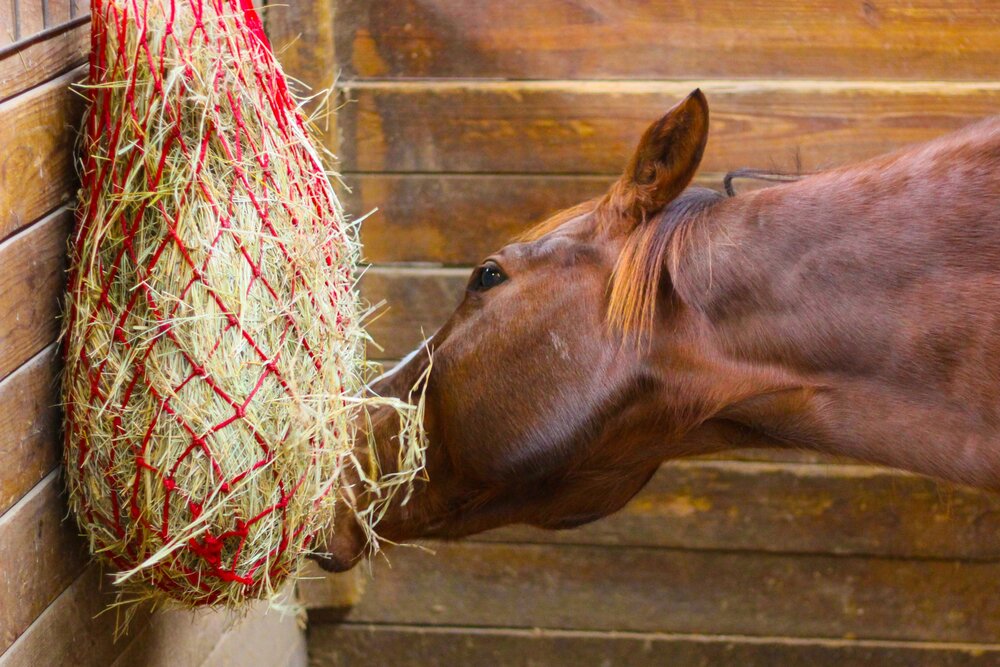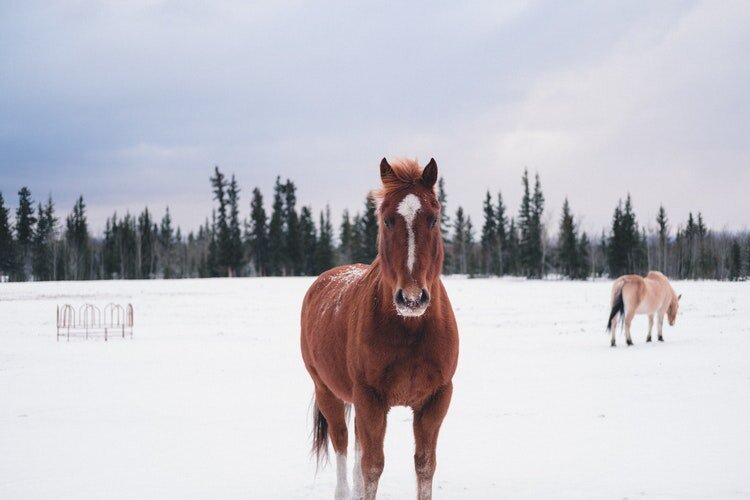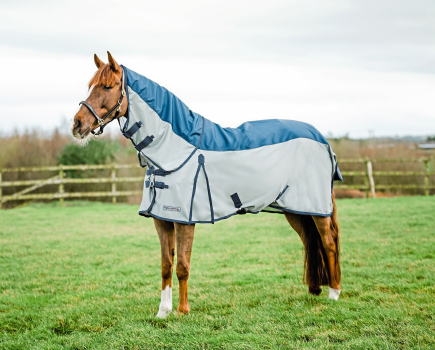We will certainly see plenty of icy mornings, wind, rain and possibly snow before spring arrives, so read on for equine health company Haygain’s thoughts on why forage should be your secret weapon to keeping a horse warm.
It seems like one of the simplest questions you could get asked about stable management – how do I keep my horse warm in winter?
Many horse owners would naturally answer ‘more rugs’, but with an increased focus on the negative impact of over-rugging our horses, is an extra stable quilt always the answer?
There are other ways to help horses stay warm when the temperatures drop, and, now that the first widespread frosts of the winter have arrived, it’s worth knowing more about them.
Hot horse facts
Firstly, it’s important to know that your horse is much better than you at regulating their body temperature. A healthy horse’s core temperature will remain at 38°C even when air temperatures around them go as low as 0°C or as high as 25°C.
That’s very different to our far narrower thermoneutral zone and the need to add and remove layers of clothing when the air temperature changes by 5°C!
Horses also have a range of physical and physiological mechanisms for regulating body temperature.
These include gaining naturally gaining weight in summer and autumn ready for winter, ‘fluffing’ their double coat using erector muscles at the root of each hair follicle to trap warm air and producing waterproof oils in the coat that keep rain and moisture from getting to the skin.
But how can feeding horses hay help replace the need for layers of rugs?
Central heating for your horse
 Feeding horses really does help to keep them warm, because digestion acts like central heating for a horse, warming them from the inside out.
Feeding horses really does help to keep them warm, because digestion acts like central heating for a horse, warming them from the inside out.
The caecum, which is three times the size of a horse’s stomach, is a digestive organ located between the small and large intestine.
It’s essentially a large reservoir full of active bacteria which thrive in a healthy gut and generate heat during digestion.
Interestingly, the old horseman’s adage that grain is the best feed to heat a horse isn’t true. Grain may be more calorific than most forage, but a grain-based feed isn’t as effective at keeping them warm.
In fact, the most heat is produced when the bacteria are digesting the complex carbohydrates found in long stemmed forage such as hay, haylage or straw.
Other benefits
That means that, particularly if you don’t need a full clip on your horse this winter, feeding ad lib forage will help them to stay warm on all but the coolest of nights.
There are other benefits to feeding lots of long-stem forage too. A horse who can access something to eat at any time of day or night is less likely to develop stable vices from boredom, stomach ulcers or colic.
Plus, as we’ve discovered, the steady supply of forage through their caecum will keep them toasty warm to boot.
24/7 forage
For those with horses or ponies who gain weight readily, it’s still wise to provide forage around the clock if you can.
Equine nutritionists support feeding up to 30% clean, good quality straw alongside stemmy hay to provide a constant source of low-calorie forage.
Horses who struggle to maintain a healthy weight in winter should be fed as much good quality hay as they will eat, plus feeds that include forage, grain and oils.
Monitoring your horse’s condition in winter is very important, particularly when it’s dark or they are wearing a rug for some of your visits to check on them.
Make sure you fully remove rugs to check body condition and for sores or bald patches in winter.
Steaming is key
If you’re concerned about feeding your horse hay, haylage or straw because of dust, fungi and harmful bacteria, steaming it in a Haygain Steamer will put your mind at ease.
Respirable dust (including fungi and bacteria) found in forage and bedding can contribute to respiratory disorders such as inflammatory airway disease, but steaming is the key.
A Haygain steamer is scientifically proven to reduce respirable particles by 99%, improving both the hygiene quality of the forage and its palatability.
As with any changes to diet in horses, it’s important to make any changes to forage or feed gradually and give those helpful gut bacteria the chance to adapt.
Haygain’s steamers have been developed based on research and evidence, so if you would like to learn more visit their website or drop the team a line.









